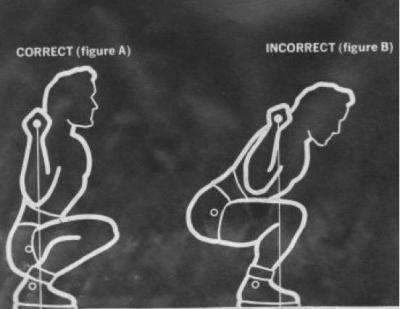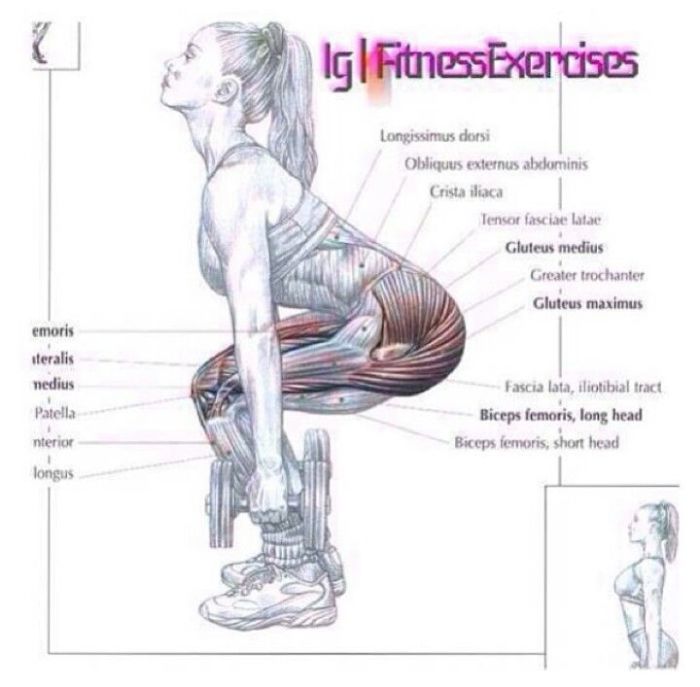 Image shows two things: the difference between half squat and full squat, and terrible form in the second image
Image shows two things: the difference between half squat and full squat, and terrible form in the second image
Squats (and deadlifts) are the two most functional muscular exercises. The former is getting up, and the latter is picking up stuff.
Squats are known as "The King of Exercises" because so many muscle groups are stressed. They are also said to be beneficial for knee joints.
Squats come in many forms: the basic barbell back squat (a power lift), and calisthenics like body-weight squats, squat-and press, side squats, squat jumps, heavy ball wall throws, etc.
I have been thinking about how to deepen my barbell squats. With body-weight or hand weights, I can do full squats easily, but with heavier weight I do not go below 45 degrees. It's partly confidence and partly weakness.
To do full squats with barbell weights (instead of half-squats, 90 degrees) I think I need to reset my barbell squat program with the plain bar (45 lbs) or light weights and to try to work up quickly from there. I'm convinced that the full squat is the real deal.
Also, Squats Are Safe, But You’re Probably Doing Them Wrong
As a general rule, if the bar is so heavy that you cannot squat below parallel with it and stand back up, it’s too heavy to have on your back.
What about you?
Below the fold, image depicting all of the muscles engaged in a full squat. She's using dumbells, but it is not as if gals cannot do barbell squats. They sure can, and using the bar makes it more reliable to keep a chest-up posture. On the other hand, dumbell squats get you low if you touch the dumbells to the ground...but on the third hand, barbell back squats let you squat with more weight than your grip is strong.


 Image shows two things: the difference between half squat and full squat, and terrible form in the second image
Image shows two things: the difference between half squat and full squat, and terrible form in the second image 